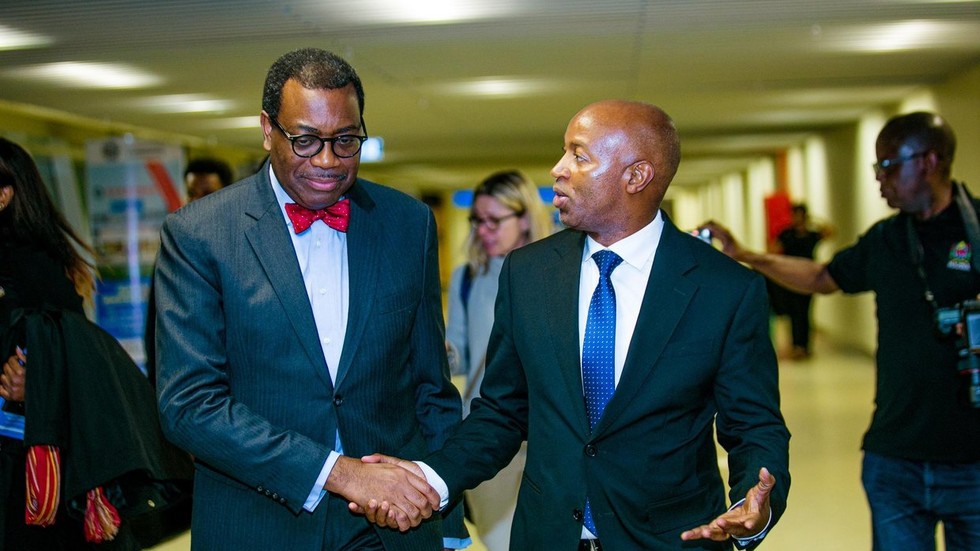Powering the Future: Africa’s Ambitious Plan to Electrify 300 Million Lives
In an era where energy access is crucial for sustainable development, Africa is embarking on a transformative journey to electrify 300 million lives across the continent. This ambitious plan, known as the Africa Electrification Initiative (AEI), aims to address the pressing energy needs of millions while fostering economic growth, enhancing living standards, and promoting innovative energy solutions. With a population of over 1.3 billion, the need for reliable and sustainable electricity is more critical than ever. The initiative not only underscores the continent’s commitment to achieving universal energy access but also highlights the potential for renewable energy sources to play a pivotal role in this transformation.
The Current Energy Landscape in Africa
As it stands, Africa faces significant challenges in energy accessibility. Approximately 600 million people lack access to electricity, which translates to about 43% of the continent’s population. This lack of access has dire implications for economic development, education, and healthcare. Without electricity, businesses struggle to operate efficiently, students cannot study after dark, and medical facilities face significant hurdles in providing care.
Furthermore, the reliance on traditional biomass fuels for cooking and heating contributes to health issues and environmental degradation. The World Health Organization estimates that around 600,000 deaths annually are attributed to indoor air pollution from solid fuel use. These challenges underscore the urgency of the AEI, which aims to provide sustainable and modern energy solutions to those in need.
Key Objectives of the Africa Electrification Initiative
The Africa Electrification Initiative is driven by several key objectives aimed at creating a sustainable energy future:
- Universal Energy Access: The primary goal is to ensure that every individual in Africa has access to reliable and affordable electricity by 2030.
- Promoting Renewable Energy: The initiative emphasizes the use of renewable energy sources, such as solar, wind, and hydropower, which are abundant in many African countries.
- Economic Empowerment: By electrifying communities, the AEI aims to stimulate local economies, create jobs, and enhance productivity.
- Strengthening Infrastructure: The plan includes the development of energy infrastructure, such as grids and off-grid solutions, to reach remote and underserved areas.
- Encouraging Innovation: The initiative seeks to foster innovation in energy technologies and solutions, encouraging local entrepreneurs and businesses.
Innovative Approaches to Electrification
To achieve its ambitious goals, the AEI is exploring various innovative approaches to electrification. Here are some key strategies:
1. Off-Grid and Mini-Grid Solutions
In many rural areas, extending the national grid may not be feasible due to cost and logistical challenges. Off-grid and mini-grid solutions, powered by renewable energy sources, provide an effective alternative. These systems can be installed quickly and are often more affordable for remote communities. Solar home systems, for instance, allow households to generate their own electricity, improving their quality of life significantly.
2. Public-Private Partnerships
The AEI recognizes the importance of collaboration between governments and private entities. Public-private partnerships (PPPs) can mobilize investment and expertise to drive electrification projects. By leveraging private sector innovation and resources, governments can scale up their efforts to provide electricity to underserved populations.
3. Community Engagement
Successful electrification initiatives must involve the communities they aim to serve. Engaging local populations in the planning and implementation phases ensures that projects meet their specific needs and preferences. Community ownership models can also enhance sustainability, as locals are more likely to maintain and protect resources they helped create.
Funding and Investment in Electrification
Funding is a crucial component of the Africa Electrification Initiative. To electrify 300 million lives, substantial investments will be required. Various funding sources are being explored, including:
- International Aid: Organizations such as the World Bank and the African Development Bank are key players in financing electrification projects.
- Private Investments: Attracting private investors is essential for scaling up innovative energy solutions and infrastructure development.
- Government Funding: National and local governments must allocate resources to support electrification initiatives, demonstrating their commitment to sustainable development.
The Socioeconomic Impact of Electrification
Electrifying 300 million lives will undoubtedly have profound socioeconomic implications. Access to electricity can:
- Enhance Education: With reliable electricity, schools can operate after dark, providing students with opportunities for extended learning.
- Boost Health Services: Healthcare facilities can improve patient care through refrigeration for medicines and round-the-clock lighting for critical care.
- Stimulate Economic Growth: Businesses can operate more efficiently, leading to job creation and increased incomes for families.
- Empower Women: Access to electricity can alleviate the burden of household chores, allowing women more time for education and income-generating activities.
Challenges Ahead
While the Africa Electrification Initiative is promising, it is not without challenges. Some of the key hurdles include:
- Infrastructure Development: Building the necessary infrastructure in remote areas can be technically and logistically challenging.
- Regulatory Frameworks: Effective policies and regulations are needed to create a conducive environment for investment and innovation in the energy sector.
- Financial Constraints: Securing adequate funding and investment remains a significant challenge, particularly in low-income regions.
Conclusion
Africa’s ambitious plan to electrify 300 million lives is not just a goal; it is an essential step towards sustainable development and economic empowerment. By harnessing renewable energy sources and fostering innovative solutions, the Africa Electrification Initiative has the potential to transform the continent’s energy landscape. As governments, private sectors, and communities come together to make this vision a reality, the future of Africa looks brighter than ever. With commitment, collaboration, and creativity, the dream of universal energy access can indeed be realized, powering the future for generations to come.
See more CCTV News Daily



